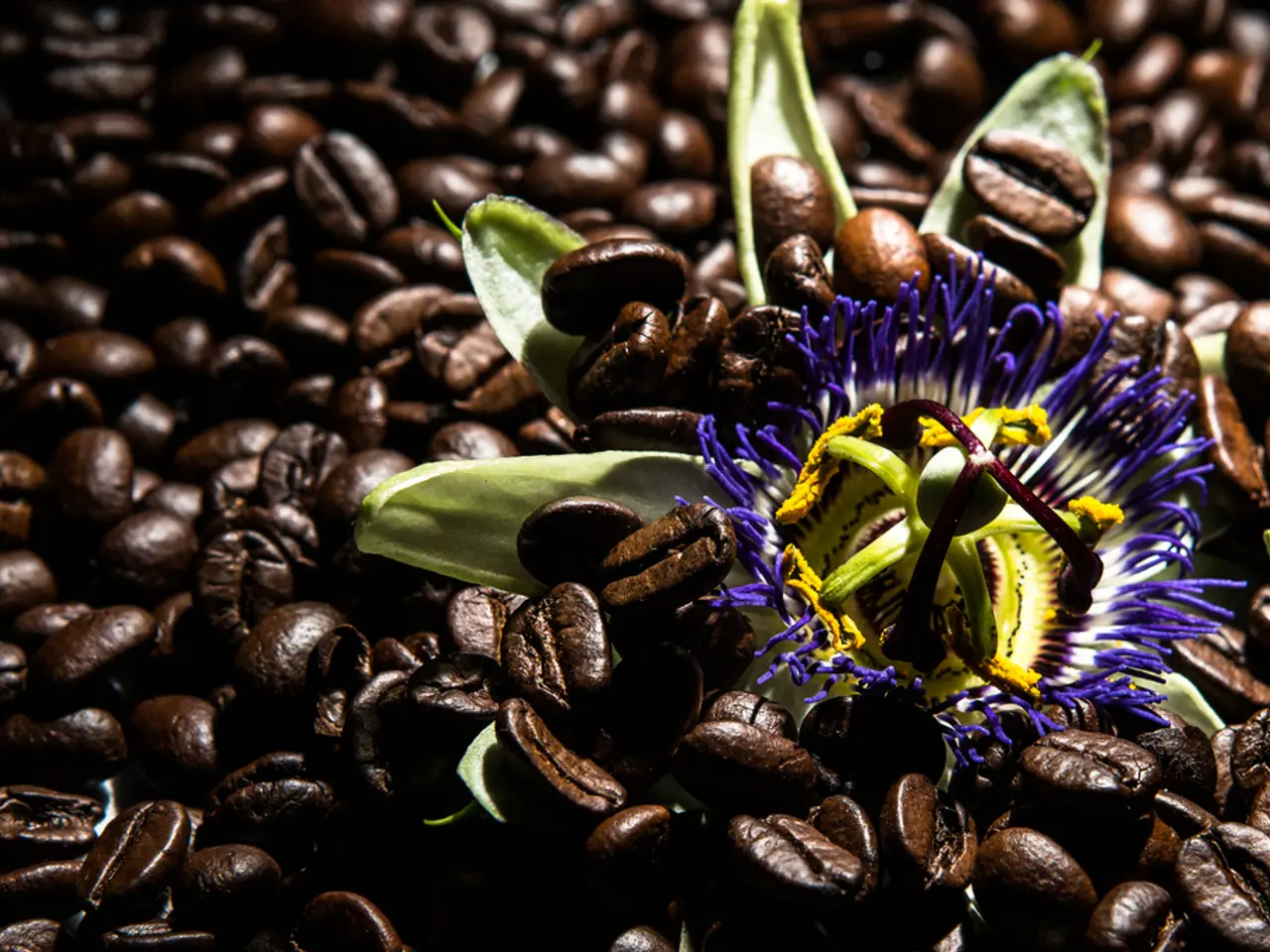Coffee costs climb due to indications of diminishing supplies
The coffee market is experiencing a dynamic phase, with global revenue projected to reach USD 473.1 billion by 2029, driven by rising consumption at home and out-of-home, particularly in cafés and restaurants. The market is expanding at a compound annual growth rate (CAGR) of approximately 6.9% through 2029, fueled by factors such as premiumization, convenience, and evolving consumer preferences, especially among younger generations like Gen Z.
Arabica Market
The Arabica market is currently tight and volatile due to factors such as tariffs and supply concerns. The U.S. has imposed a 50% tariff on Brazilian coffee imports, which began on August 6, raising supply disruption concerns. Brazil, the largest Arabica producer, has harvested 84% of its coffee, with localized hailstorms impacting only about 0.2% of acreage, thus minimal impact on total output. Tight supplies are indicated by Arabica stock levels reaching a 14.5-month low in ICE-certified inventories, contributing to price support despite tariff uncertainties. Futures have been fluctuating in the $2.85–$3.10 per pound range, influenced by geopolitical tensions and trade policy uncertainty, especially regarding potential tariff exemptions.
Robusta Market
In contrast, the Robusta market enjoys more stable supplies but remains sensitive to geopolitical and climate factors. Robusta futures have fallen by about 0.53% following tariff news, but supply is less constrained than Arabica as inventories are at a one-year high. Vietnam, a major Robusta producer, is experiencing production growth, contributing to market stability and offsetting volatility caused by geopolitical and climatic factors. Robusta coffee is favored for cost-effective blends and specialty innovations, with demand growing at a forecasted CAGR of 4.5% through 2030, supported by rising consumption in Asia-Pacific and Gen Z preferences for ready-to-drink and functional coffee products.
Key Factors Influencing Prices
Key factors influencing prices currently include tariff policies, geopolitical tension, supply dynamics and weather, inventory levels, consumer trends, regional demand growth, and emerging café cultures in various regions.
In summary, the Arabica market is currently tight and volatile due to tariffs and supply concerns, while Robusta enjoys more stable supplies but remains sensitive to geopolitical and climate factors. Overall market growth is robust, anchored by demographic shifts, premiumization, and sustainability trends. Price ranges and futures reflect ongoing uncertainty mainly tied to trade policies and Brazilian production outlooks.
Additional Information
- Vietnam's coffee exports for 2024 fell by -17.1% y/y to 1.35 MMT.
- Global June coffee exports increased +7.3% y/y to 11.69 million bags.
- Below-average rainfall in Brazil's largest arabica coffee-growing area, Minas Gerais, was only 31% of the historical average.
- Funds boosted their net-short positions in ICE robusta futures by 1,226 to 5,854 short positions in the week ended July 29.
- September arabica coffee (KCU25) is up +9.00 (+3.02%).
- Robusta exports from Brazil decreased -42% y/y to 476,334 bags.
- Coffee prices today extended this week's rally and posted 3-week highs.
- Vietnam's coffee production in the 2023/24 crop year decreased by -20% y/y to 1.472 MMT.
- The USDA's biannual report projected a +2.5% y/y increase in world coffee production to 178.68 million bags for 2025/26.
- The robust growth in the coffee market, particularly in the global consumption of ready-to-drink and functional coffee products, has sparked an interest in Robusta market, given its increased demand among younger generations like Gen Z.
- Despite the current tight and volatile Arabica market, weather conditions can significantly impact the supply, as evidenced by below-average rainfall in Brazil's largest Arabica coffee-growing region, Minas Gerais, potentially affecting future production and prices.








